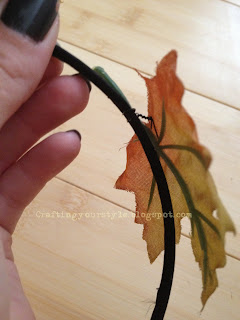CRAFT DIFFICULTY:
Moderate
I love the allure of a little skin showing. A little peek-a-boo skin under lace, crochet, or eyelet is something my eyes have always been drawn to. So when I started seeing cut outs on the runway and in lookbooks everywhere, I was intrigued. I think I first saw cut outs in dresses… pieces cut out from the sides or on the shoulders of shirts. Then they started getting crazy with cut outs on the back.
Which brings me to my other thing I love when it comes to showing a little (or a lot) of skin… the back!! I love backs, I feel the bare-backed ensemble is so sultry and if a woman can pull off a low back dress she looks confident and one can expect to be doing a double-take in her direction, just to get another glimpse. Any girl can wanting to look attractive can throw on a low-cut shirt or dress, yes they will probably get some attention, but with dresses that have a bare back it is a different kind of attention, a "wow, who is that girl?" kind of attraction and not "Hey baby, how you doin?" response.
A dramatic backed outfits are usually simple, typically with a high neckline, (which allows people to actually look at your face) and leaves a little element of surprise in the back that can be breathtaking.
The unexpected attention grabber (done tastefully) is something everyone should look for in an amazing outfit.
Lately, I have been seeing cut out backs in oversized tees. I have seen the heart cut outs, the skull, and the rib cages too. In this how-to I will be showing you how to do the cross.
WHAT YOU WILL NEED:
-Scissors
-Oversized t-shirt
(The size I used was adult small, but looking back I think I would like an even more
relaxed fit. A medium would have been ideal)
-Cardboard or something to slip in between the layers of the shirt.
-1 Index card
-Ruler
-White Colored Pencil or something that would show up on your shirt.
(a regular pencil should work or chalk pastel too)
1. First lay your t-shirt face down on your working space.
2. Slip your board in between the layers of your shirt.
3. Then with your ruler, measure the distance across the back of the shirt about 3-4 inches down from the collar line. With your white colored pencil, mark the center. Decide the width size you would like for the top of the cross, and make a line where the center is at the mark you made earlier, and set aside. (mine was about 6inches.)
4. Now we're gonna make the template of the rectangle cut outs. With your scissors, cut a 1.5cm X 3cm rectangle from your index card.
5. Place your rectangle template under the line you just made in step 3, and determine how many rectangles you would like to make up the width of the vertical part of your cross. (I decided that I liked four vertical rectangles across looked best for me. *NOTE: make sure that you're giving yourself enough space in between your rectangle shapes. After completing this shirt I would suggest at least a 1/4 inch.)
6. Start tracing your shapes to make your first row.
7. Then start the second row. Making sure you align the sides of the rectangles with the ones on the top row.
8. I decided that for my cross I liked just the two rows for the top of the cross, but you can do however many you'd like. Next, you start the horizontal part of the cross. I had this cross section made up of horizontal rectangles. I started tracing from the inside out. Still making sure that the strip in the middle aligned with the precious rows.
9. I decided to do 6 across and 3 down.
10. To make sure that everything was coming out aligned, I ran a line on the tops and bottoms of the rectangles using the ruler.
11. After the cross section is done you can complete the cross. Place your ruler up against the left side of the top two rows. This way you can align the bottom part of the cross with your previous work.
12. Then fill in the rest of the rectangles to complete your cross design. I liked the look of 5 more rows.
13. Now your done with your cross design!! (Whooo!! now you only have the cutting is left.)
14. So for this design to work the rectangles are being cut out and the spaces between them stay intact.
15. Now cut the rest of the rectangles out.
16. And you're done!! :)
ENJOY YOUR NEW CUT OUT SHIRT!!






























































